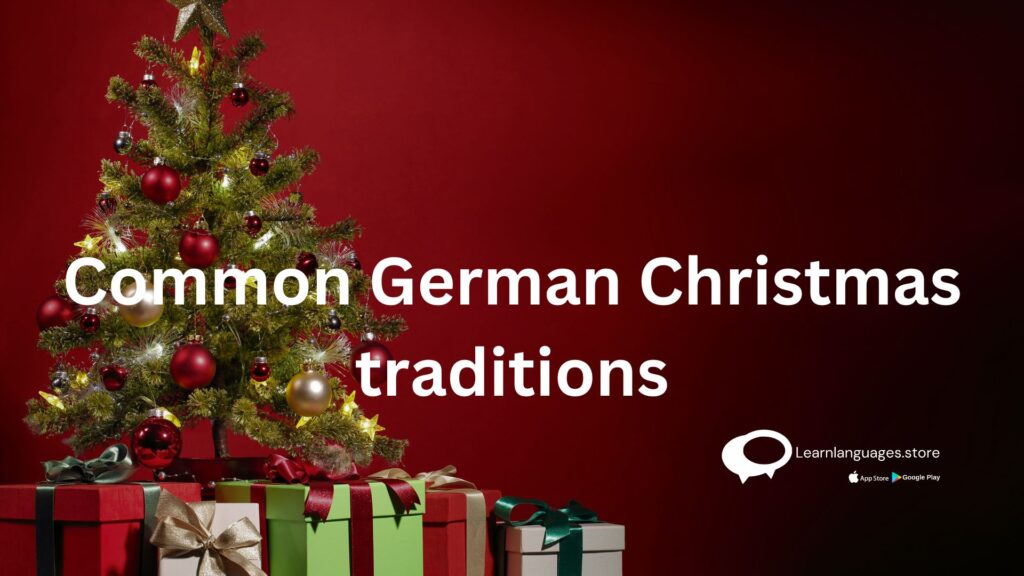8 popular German Christmas traditions and their meanings
8 popular German Christmas traditions and their meanings
German Christmas traditions encompass customs, rituals, religious practices, and folklore. This guide explores famous German Christmas traditions and offers German sayings to enjoy this beautiful holiday season.
Estimated reading time: 4 minutes
Common German Christmas traditions

1. Stockings are filled on 6th December
On December 6, Saint Nicholas Day, children in Germany receive their stockings, which they then open on December 7. Regardless of religious affiliation, many European nations follow this venerable custom known as the Feast of Saint Nicholas.
An unstuffed sock, a bag looking like a sock, or more contemporary stockings are what kids typically hang outside their doors for Saint Nicholas to fill. With everything from small toys to oranges and chocolate coins, it’s a sweet treat for kids to enjoy at the start of December.
2. Krampus Night (Krampus Nacht)
It is customary for individuals to dress up as the devil Krampus and parade around the streets the night before the Feast of St. Nicholas during Krampus Nacht. A horned character known as Krampus haunts disobedient kids during the holiday season.
3. Adventskalendar (advent calendars)

Although advent calendars are available worldwide, the custom actually started in Germany. Many families started marking the days leading up to Christmas in the nineteenth and twentieth centuries by lighting a candle or painting a line on doors or walls. Of course, the custom has changed a little, with stores now offering both sustainable fill-your-own advent calendars and chocolate versions.
4. Christmas is celebrated on Christmas Eve
Christmas Eve (Heiliger Abend) is a jam-packed day of celebrations for Germans. Many homes will typically spend the day preparing meals for the family, putting the finishing touches on the house, and decorating the tree. Families will gather around the tree as night sets.
According to custom, the ‘Christkind’ (Christ child) brings the presents to the kids who are waiting outside the room. The family will sing songs in the room when children are invited to enter before the bescherung (gift-opening) starts. Then, some families go to their local churches for Christmas Eve services, while others indulge in delicious cuisine.
5. The Christmas tree is decorated

The Christmas tree is often only decorated on December 24th in Germany. Many of the older generations still deck the halls on Christmas Eve morning, though this now varies per household. The tree is decorated last after the rest of the house has been finished.
6. Placing an Advent wreath on the table
German Lutherans introduced the custom of advent wreaths, or adventskranz, in the sixteenth century. Four candles are commonly used to make the wreath, which is also decorated with pine cones, berries, dried flowers, and other holiday decorations. Beginning in December, the wreath will be placed in the majority of homes, with one candle being lit each Sunday.
7. Christmas markets
German Christmas markets are a tradition in Germany, despite the fact that its allure has expanded to other countries. Christmas markets are supposed to have started in the German-speaking region of Europe in the middle ages. There is nothing better than ice skating, mulled wine, and a hotdog from one of the best markets ever.
8. Christmas angel
There are several Christmas angels (Weihnachtsengel) displayed everywhere in German homes throughout the holiday season. One of the most well-liked ornaments, angels are either hung on the tree or put on sideboards. In certain families, they are passed down through the years with unique meanings like hope, joy, love, community, and peace.

Conclusion
The holidays are the ideal time of year to enjoy with loved ones. Every learner of German should be familiar with the fundamentals of German Christmas customs. Learn how to greet people on this joyous occasion by saying Merry Christmas in German. learn with learnlanguage.store
Learn Languages Store
Vashi,
Email: services@learnlanguages.store










